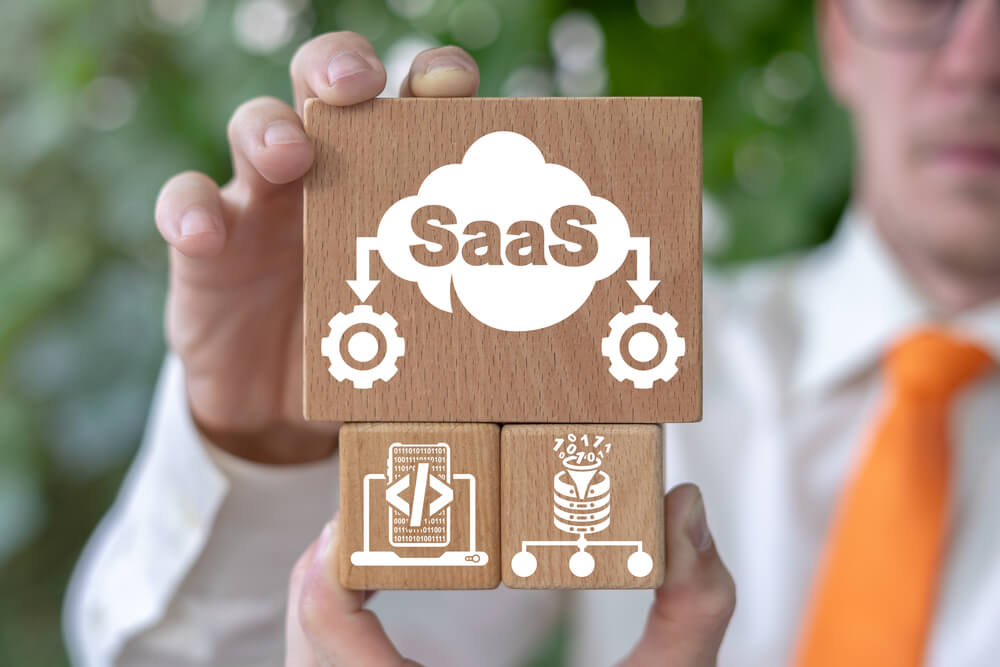
New SaaS Marketing Trends Could Bring Benefits to Your Company!
Navigating the ever-evolving world of software as a service (SaaS) marketing can be daunting. It is a battlefield out there, and staying ahead is a must. This is where a skilled SaaS marketing agency comes into play. They craft strategies that speak to your audience, giving you a competitive edge. This guide details the latest SaaS marketing trends. It explores:
 Certain trends are at the forefront of SaaS marketing. These trends shape how firms engage with their audiences, optimize strategies, and achieve their goals. Understanding these trends is critical to the success of SaaS marketing.
The following section explores how these trends offer new opportunities for growth and innovation.
Certain trends are at the forefront of SaaS marketing. These trends shape how firms engage with their audiences, optimize strategies, and achieve their goals. Understanding these trends is critical to the success of SaaS marketing.
The following section explores how these trends offer new opportunities for growth and innovation.
 We have tackled the most prominent trends in the SaaS industry, but you must not focus solely on them. Some impactful trends often go unnoticed and catalyze success. Below are lesser-known strategies that are potentially crucial for propelling a SaaS company forward. Let us take a deeper dive.
We have tackled the most prominent trends in the SaaS industry, but you must not focus solely on them. Some impactful trends often go unnoticed and catalyze success. Below are lesser-known strategies that are potentially crucial for propelling a SaaS company forward. Let us take a deeper dive.
- Why keeping up with trends is vital for your business’s survival.
- The most buzzworthy trends everyone is talking about.
- Underrated yet powerful trends to anticipate.
Want to know how we help SaaS businesses stand out from the crowd? Watch this video to learn how DAP makes it happen!
Why Staying Ahead Matters in SaaS
The SaaS landscape is changing at a breakneck speed. Consider this: the global SaaS market, which stood at $237.48 billion in 2022, is predicted to explode to an astounding $908.21 billion by 2030. In this rapidly growing market, falling behind is a recipe for obscurity. For companies, this growth brings both opportunities and challenges. The competition is increasingly fierce, and consumer preferences, technologies, and strategies constantly evolve. Sticking to the old ways is like trying to run a marathon in quicksand. Your marketing strategies need to be groundbreaking to stay one step ahead. To excel in this competitive environment, embracing and keeping pace with the latest trends is key. You have to know what your audience needs before they do, using emerging technologies to your advantage and crafting messages that resonate and stick. In short, in the world of SaaS marketing, the future belongs to the bold, the innovators, and the trendsetters.Commonly Talked about SaaS Marketing Trends
 Certain trends are at the forefront of SaaS marketing. These trends shape how firms engage with their audiences, optimize strategies, and achieve their goals. Understanding these trends is critical to the success of SaaS marketing.
The following section explores how these trends offer new opportunities for growth and innovation.
Certain trends are at the forefront of SaaS marketing. These trends shape how firms engage with their audiences, optimize strategies, and achieve their goals. Understanding these trends is critical to the success of SaaS marketing.
The following section explores how these trends offer new opportunities for growth and innovation.
1. User Experience and SaaS SEO
Search engine optimization (SEO) is more critical than ever. Around 48% of SaaS firms must improve their website’s Core Web Vitals on the desktop. This process involves enhancing SaaS SEO, accessibility, and performance. Additionally, only 11% of SaaS businesses lack sticky navigation across their website, emphasizing the importance of seamless user experience (UX) to boost engagement and conversions. Imagine a SaaS company specializing in project management software. Good SEO and smooth navigation make it easier for potential customers to find and understand its product. When a project manager searches for “efficient project management tools,” the company’s site appears at the top of search results. Sticky navigation and a clear website layout guide the visitor to a free trial sign-up, boosting the chance of conversion.2. Artificial Intelligence and Machine Learning
Artificial intelligence (AI) and machine learning (ML) are central to SaaS marketing. They enhance UX and facilitate data-driven marketing campaigns. About 35% of SaaS firms already use AI, with 42% seeking to use it later. These figures make sense because AI and ML are crucial for hyper-personalization, dynamic pricing models, and predictive analytics. Suppose a customer relationship management (CRM) company uses AI. The technology lets it offer personalized customer interactions and predictive analytics. These factors enhance UX while also showing potential clients the advanced capabilities of the company’s platform.3. Public Relations
A steady trend in SaaS marketing is the significance of public relations (PR). It is a cost-effective tool for building brand recognition and credibility in the market. It generates awareness, earning media coverage that often increases trial sign-ups and conversions. For instance, a new SaaS company specializing in project management wants to gain media coverage. It utilizes PR by sharing its unique approach to solving workflow inefficiencies. This coverage results in increased trial sign-ups from firms looking for innovative solutions.4. Mobile Optimization
The SaaS client base primarily operates on desktops. Neglecting mobile optimization should not result in the failure of many SaaS businesses. However, mobile devices will continue dominating daily life. Reliable SaaS marketing agencies will tell their clients that they should still consider investing in mobile optimization. The number of adults using mobile phones will rise to 253.3 million in 2023, and the daily time spent on these devices is also forecasted to skyrocket. If a SaaS firm goes out of its way to optimize for mobile, they show customers and stakeholders that they value their needs.Underrated SaaS Marketing Trends
 We have tackled the most prominent trends in the SaaS industry, but you must not focus solely on them. Some impactful trends often go unnoticed and catalyze success. Below are lesser-known strategies that are potentially crucial for propelling a SaaS company forward. Let us take a deeper dive.
We have tackled the most prominent trends in the SaaS industry, but you must not focus solely on them. Some impactful trends often go unnoticed and catalyze success. Below are lesser-known strategies that are potentially crucial for propelling a SaaS company forward. Let us take a deeper dive.
1. Generative AI and Large Language Models
The previous section talked about AI and ML in general. Yet, a less discussed trend concerns a more specific type of AI. Large language models (LLMs), such as ChatGPT and Bard, have shaken the digital world. They have revolutionized mundane tasks and large-scale processes, prompting excitement about the future and fears of a robot uprising. These technologies are increasingly becoming influential in SaaS. They offer capabilities such as content creation, market research, and more. Integrating these features into SaaS solutions is bound to transform companies’ approach to software. Suppose a SaaS firm specializing in digital marketing tools starts to use generative AI. The AI assists in content creation. It generates high-quality blog posts and other content for various channels. Additionally, it performs market research and sentiment analysis to offer insights into customer preferences. The AI-generated content resonates more with the target audience, enabling the SaaS firm to experience a surge in user engagement and conversion rates. The boosted production efficiency also allows the company to focus on other areas, such as product development and customer service.2. Sustainability and Social Responsibility
More tech companies recognize the importance of sustainability in long-term success. SaaS firms are not an exception. They are expected to join the green movement to stay relevant in the coming years. Being sustainable and socially responsible aligns with the global shift towards ethical business practices. This shift to sustainability is not solely about minimizing the harmful effects of SaaS operations on the environment. It also involves proactive efforts to contribute positively to society. Consider cloud-based SaaS companies. They reduce their carbon footprint by optimizing server efficiency. They also support social causes by donating a portion of their profits to environmental initiatives. The firms then highlight these efforts in their marketing, demonstrating their commitment to sustainability and social responsibility. This approach attracts a customer base that values eco-friendly and socially responsible practices. It builds a loyal community around those shared values. Moreover, it helps differentiate the SaaS firm in a crowded market. Sustainability enhances brand reputation and contributes to long-term customer loyalty.Summing Up
In the fast-paced SaaS world, trends such as user-friendly navigation, AI integration, and mobile optimization are key to success. Adapting to these can set your company apart. Are you ready to harness these trends for growth? Contact Digital Authority Partners (DAP) today and stay ahead in the competitive SaaS landscape.Want To Meet Our Expert Team?
Book a meeting directly here



